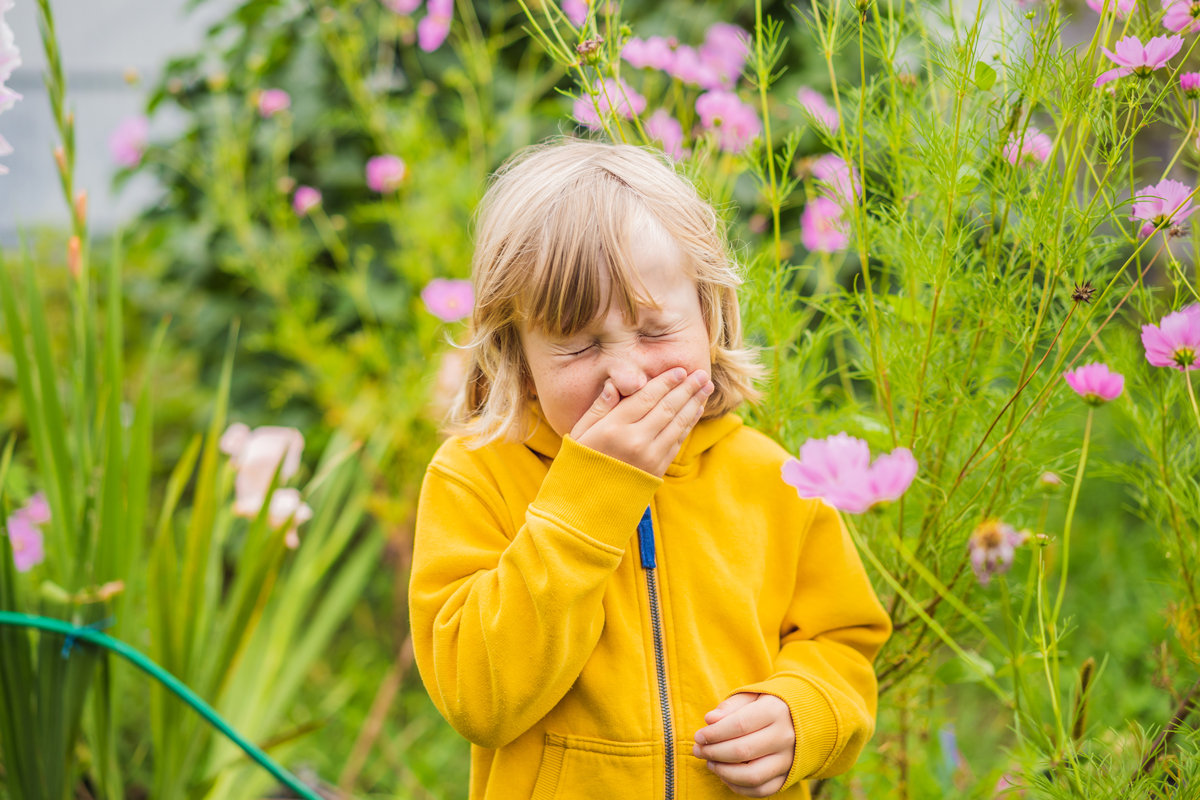
Photograph by galitskaya/iStock/Getty Images Plus
Any Atlantan who suffers from allergies knows that spring and fall can be brutal, and it doesn’t feel good to allergy sufferers to see that the city keeps breaking its own pollen count records. It can be even worse for children, though, who aren’t as good at identifying symptoms and communicating their discomfort.
Atlanta’s allergy season can feel like it lasts all year, and that’s because it kind of does, depending on what you are allergic to. Dr. Sofia Edwards-Salmon, an allergist with Chacko Allergy, says tree pollen kicks off in February and goes until April, then grass pollen hits around May and June. High summer offers slight relief before weed pollen stirs up around September to October. It’s the price we pay for living in the “City in the Forest,” as lush surroundings mean more opportunities for irritation.
According to Dr. Edwards-Salmon, children can develop environmental allergies after age two. The mean age is 10, and it is uncommon for seasonal allergies to appear in infants and toddlers under age two. “There are a lot of theories as to why allergies develop, including things like an increased length of pollen seasons and lifestyle changes, like less vitamin D and less parasite exposure [to help train the immune system],” she says.
While avoidance is the first line of defense, Dr. Edwards-Salmon knows how that can be difficult for children and family life in general. She suggests going outside during specific times. “Mornings tend to have lower pollen counts than the afternoons and evenings,” she says. She also suggests rinsing off and changing clothes after coming inside, as well as wiping down pets who might track in pollen. If an older child is amenable, wearing a mask can be a good idea.
Interestingly, the management of seasonal allergies hasn’t changed all that much, with antihistamines offering the most effective relief. Some parents might want to reach for Benadryl (diphenhydramine), but Dr. Edwards-Salmon suggests other options for children, as chronic Benadryl use is now associated with more side effects than newer first-generation antihistamines like cetirizine (Zyrtec), fenxofanadine (Allegra) and loratidine (Claritin), all of which come in children’s versions. “My go-to is a nasal spray over an oral medication since they deliver medication directly to the most affected areas. They are more effective if used regularly and correctly,” she says.
To do so, have your child look at their feet when spraying into their noses, spray away from the middle of their nose, and have them breathe normally, she says. If symptoms persist and feel chronic, she recommends you book your child an allergy test to get more specific therapy, including allergy shots, which expose the immune system to the allergens in increasing amounts to build up tolerance.
Advertisement




